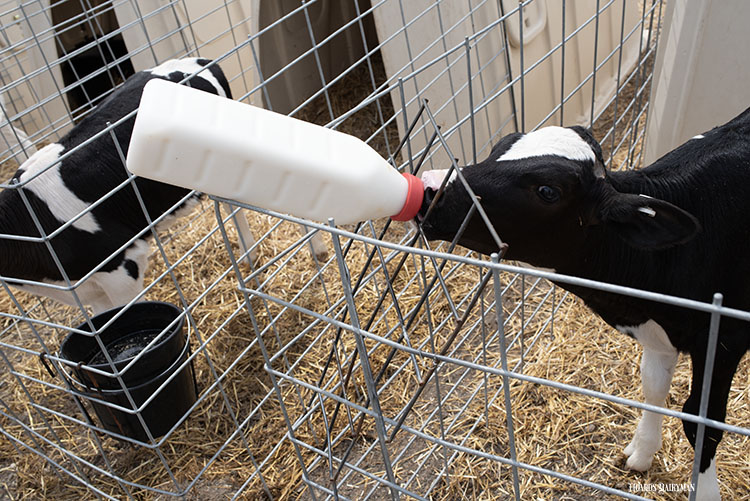
Andrea Lear, an assistant professor and veterinarian with the University of Tennessee, talked about rehydrating calves at the annual conference of the American Association of Bovine Practitioners (AABP) held in Milwaukee, Wis.
First, she posed four questions related to rehydration:
What is the problem?
- What solution am I going to use to correct this problem?
- How much fluid am I going to administer?
- What route am I going to use and how much?
Determining the method of fluid administration depends on a few factors. One is the age of the calf. She noted that calves over one week of age are more likely to suffer from extreme acidosis, and those animals are going to benefit from IV alkalization more than a younger calf.
The calf’s hydration status is also important, which can be estimated using the skin tenting method or assessing the animal’s eyes. Lear said clinical signs are not apparent until a calf is 4% to 5% dehydrated, and by 8%, “you are already fighting a losing battle.”
Lear also touched on the mentation status of the calf. For example, this is noticing evidence of shock or acidosis.
Whether or not the calf can stand is a fairly straightforward way to decide what route of fluid administration is best. “If the calf is standing, most of the time you can get away with oral rehydration and oral alkalization,” Lear said. “As soon as calf is sternal or fully recumbent, that’s when I need to start looking at IV hydration and alkalinization.”
If the calf is standing and still has a suckle reflex, Lear recommended using oral resuscitation, alternating with milk feeding. “Instead of replacing milk, add an extra feeding,” she stated. Use an oral electrolyte solution containing acetate or propionate.
Provide IV fluids for calves that are down or compromised in some way. These could be calves with severe dehydration, shock, or reduced gastrointestinal function.
Lear noted that IV treatment gives a producer and veterinarian more control of what fluids are administered, and the fluids can be tailored to a specific calf. She reminded the audience, though, that this takes time, costs money, and is intended to be a short-term solution.
“This is a quick opportunity to resuscitate a calf, to help it get over a hump, but you don’t want to maintain a catheter for a long time,” she summarized. “Finish out with oral therapy to fix the hydration status.”








